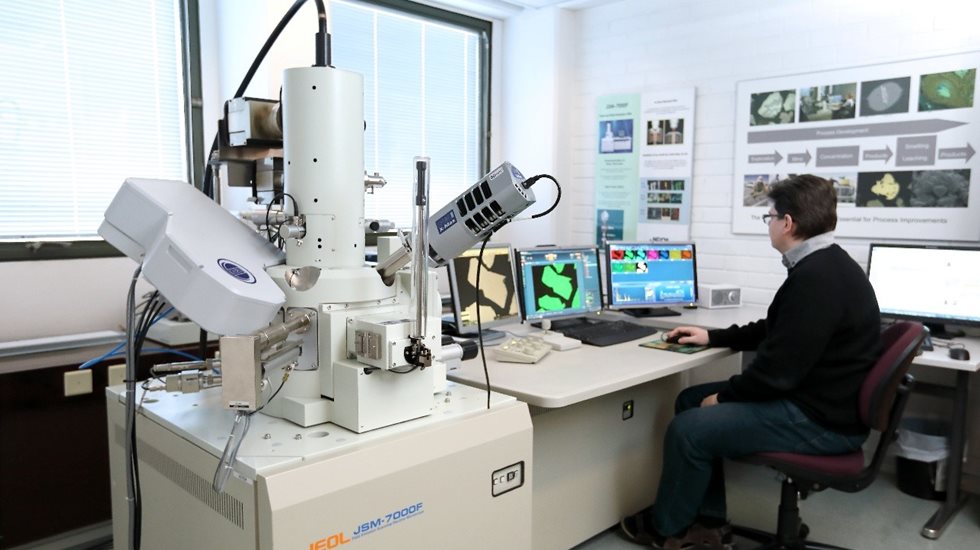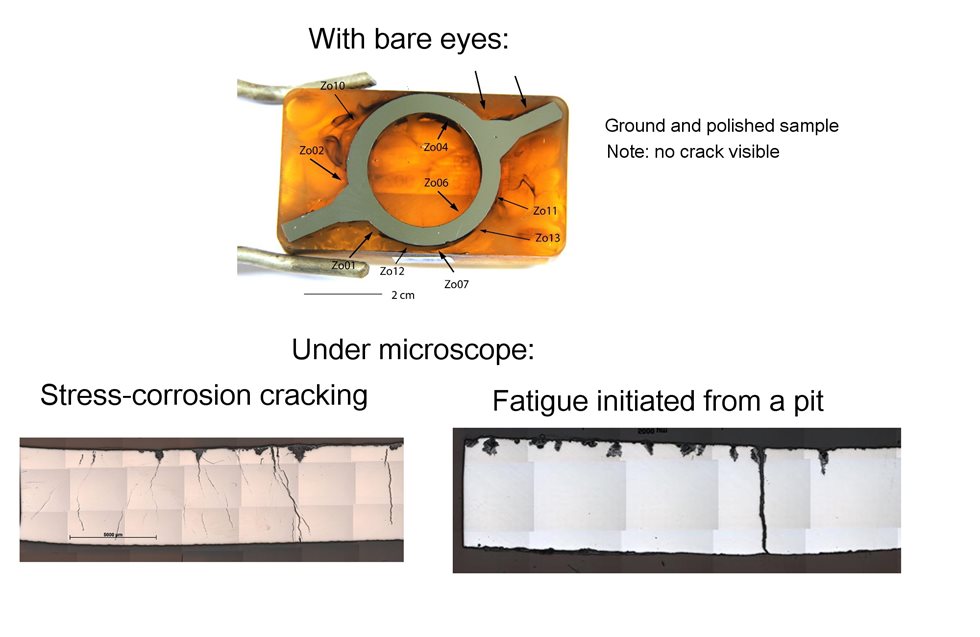In the case of a failure of an equipment, machine part or structure it is important to collect physical evidence and samples if possible. They can include the failed part itself or a solution or deposit sample from the surroundings. We can consider a hypothetical example of a leaking heat recovery boiler tube made of a stainless steel. The root cause analysis can easily proceed to a point where it can be said that the tube leaked because of a crack. What caused the crack then? Considering the material and the environment there are several options: it can be a fatigue crack initiated with or without the help of corrosion or it can be a stress-corrosion crack. The corrective actions are the same in all the cases: fix the pipe. Nevertheless, the mechanisms have different main contributing factors and, consequently, different preventive actions but they all lead to the formation of a crack.
Outotec has sophisticated laboratory equipment available at its Research Center in Pori, Finland to carry out failure analysis. The most relevant equipment include microscopes (optical and scanning electron microscopes), hardness testers, tensile testing machine and a large variety of chemical analysis techniques to identify and quantify the presence of different elements.
Getting back to the hypothetical leaking pipe. If a sample is cut from the failure location and a cross-sectional sample is prepared from it, it can be viewed with an optical microscope. Under microscope, the different mechanisms are easily identified as illustrated in Fig. 1. A branched crack is formed due to stress-corrosion cracking. Then the contributing factors are chlorides and tensile stresses. If the initiation site is inside the pipe then the chloride concentration of the cooling water merits attention. If it is from the outside the deposits on the surface must be rich in chlorides and should be washed away periodically. Fatigue crack is typically straight and it may initiate from a corrosion pit. If pitting is the only initiation site better water quality can eliminate the problem. If the fatigue crack initiates also from a plain surface, vibrations of movement of the pipe must be checked.
As demonstrated with the hypothetical example, in-depth knowledge of the failure mechanism is of paramount importance when tailoring the preventive actions. Laboratory techniques combined with in-depth understanding of material behavior and process technology allows drawing the correct conclusions how to eliminate the problem and how to allow perturbation-free operation. If you need Outotec’s assistance in failure analysis please contact your site account manager.


